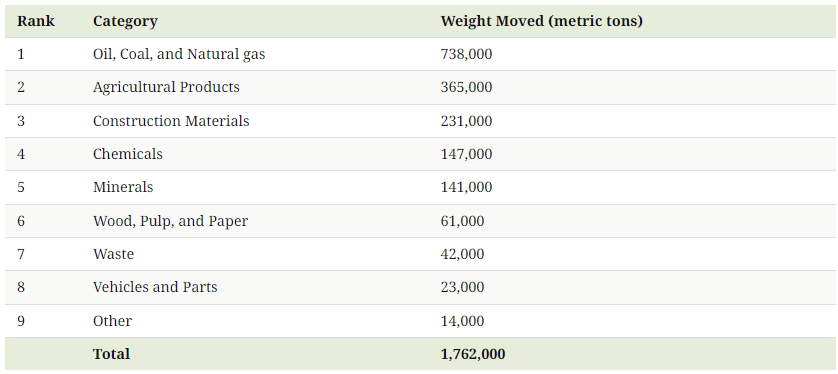
- U.S. rail freight transported nearly 1.8 million metric tons of materials in 2023, with energy products, including coal, oil, and natural gas, being the most common.
- Rail stands out for its safety record and sustainability, contributing just 1.8% of U.S. transport greenhouse gases.
- Greenbrier Companies, a global leader in freight railcar services and maintenance, enables rail to keep the economy moving.
Rail freight is the backbone of U.S. infrastructure, moving millions of tons of various materials and linking the nation’s numerous ports and cities to facilitate domestic and international trade.
But what material did U.S. rail move the most in 2023?
For this graphic, Visual Capitalist partnered with The Greenbrier Companies to answer this question and dive into what makes rail vital to the U.S. economy.
What Does U.S. Rail Freight Move?
Versatility is one of rail’s greatest strengths. In 2023, rail freight moved nearly 1.8 million metric tons of a wide variety of materials around the nations 140,000 mile rail network—everything from wood and chemicals to vehicle parts and waste products.
However, energy products, particularly coal, oil, and natural gas, were the most common materials moved.
Methodology: Categories provided by the Bureau of Transportation Statistics were condensed and simplified. Note: Figures rounded to the nearest thousand. The ‘other’ category includes but is not limited to electronics, precision instruments, and miscellaneous freight.
Why Choose Rail?
Rail is an incredibly versatile mode of transport, facilitating a wide range of industries and the U.S. economy as a whole by, amongst many other reasons, acting as a point of connection between trucking and shipping.
However, rail’s history of safety and sustainability makes it stand out.
According to the Federal Railroad Administration, rail accident rates are down 27%, and rail accidents where hazardous materials are transported are down 75% since 2000.
Rail also contributes just 1.8% of U.S. transports greenhouse gases despite moving 40% of all long-distance freight. Rail can do this as it is a highly fuel efficient form of transport and is becoming more efficient every year.
In fact, in 2023, U.S. rail consumed 709 million fewer gallons of fuel than it did in 2000.
Moving What Matters
Rail is critical in supporting many U.S. industries by transporting diverse materials within the nation, linking to ports, and facilitating international trade.
With over 120 years of history, Greenbrier Companies has emerged as a global leader in freight railcar wheel services, maintenance, and parts, allowing rail to keep the economy moving.
We give you energy news and help invest in energy projects too, click here to learn more






